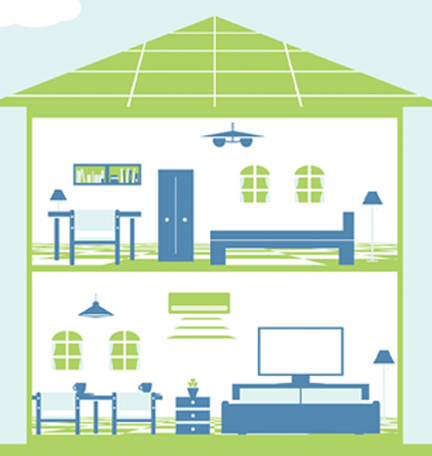From a flat tire to an unexpected hospital stay, emergencies happen. And unfortunately they can be expensive. But even if you aren't ready for an emergency, don't panic. Here are four simple ways to start saving and get on track.
1. Take Charge of Your Finances
Building an emergency fund starts with prioritizing saving. Without financial discipline, it’s easy to fall into the trap of putting extra money into savings and then pulling it back out to pay a bill or cover a large purchase. “When that happens, the money saved was never ‘extra’ in the first place,” says Regions Assistant Branch Manager Dana Novosel. She suggests building a budget first so you know where your money is going and what’s truly available to save.
2. Divide and Conquer
When budgeting, think buckets. Separate your money into sub-accounts: one for bills and one for other spending. Deposit your paycheck into your bills account. After paying your rent or mortgage, utilities, any loans, and insurance payments, move what’s left to your spending account. Use money from that account to pay for things like groceries, gas, and entertainment costs.
“Once you know how much you’re actually spending, you can see how much you have left over to save,” says Novosel, who suggests spreading your bill due dates evenly throughout the month so you’re not left with a pile of money at one point of the month and none at another.
3. Set Clear Targets
“How much you need in your emergency fund depends on many factors, but three to six months of income is recommended,” Novosel says. Once you set a savings goal, calculate how much you need to save each month to reach it.
It may be helpful to save for different kinds of emergencies separately. For instance, you can set up one emergency fund for your homeowners insurance deductible, another for car repairs, and another to cover your living expenses in the event of job loss. Nickname your emergency savings accounts so you know what each one is for, and set up automatic deposits into each account to simplify saving for multiple goals.
4. Uncover Savings One Layer at a Time
Build your emergency savings by looking for extra money first. There may be more than you think. “For instance, when you’re organized and paying bills on time, you can save on late charges and non-sufficient-fund fees,” Novosel says.
Ask yourself which luxury items you can live without. The answer will be different for everyone. “I don’t believe in punishing yourself,” Novosel says. “If you really like your morning latte, then eliminate something else.”
If you still aren’t finding enough places to save money, shop around for insurance plans, cell phone contracts, utility packages, and financial services that may offer the same product for less.
No one likes to think about the possibility of being faced with an emergency, but that shouldn’t stop you from saving for one. Being financially prepared can make life’s unpleasant surprises easier to overcome.











